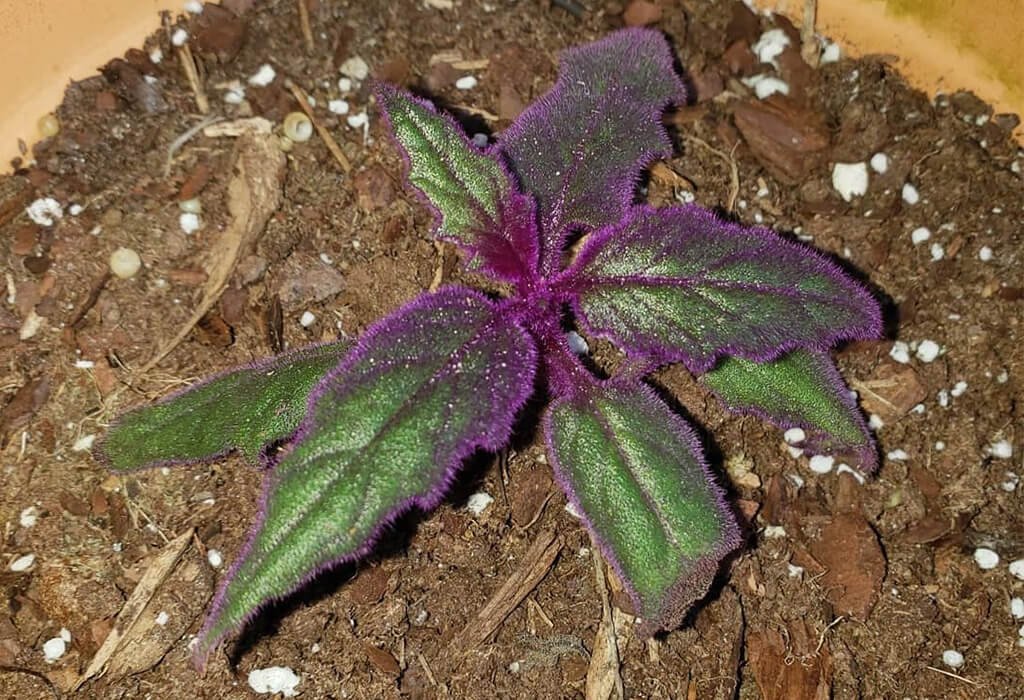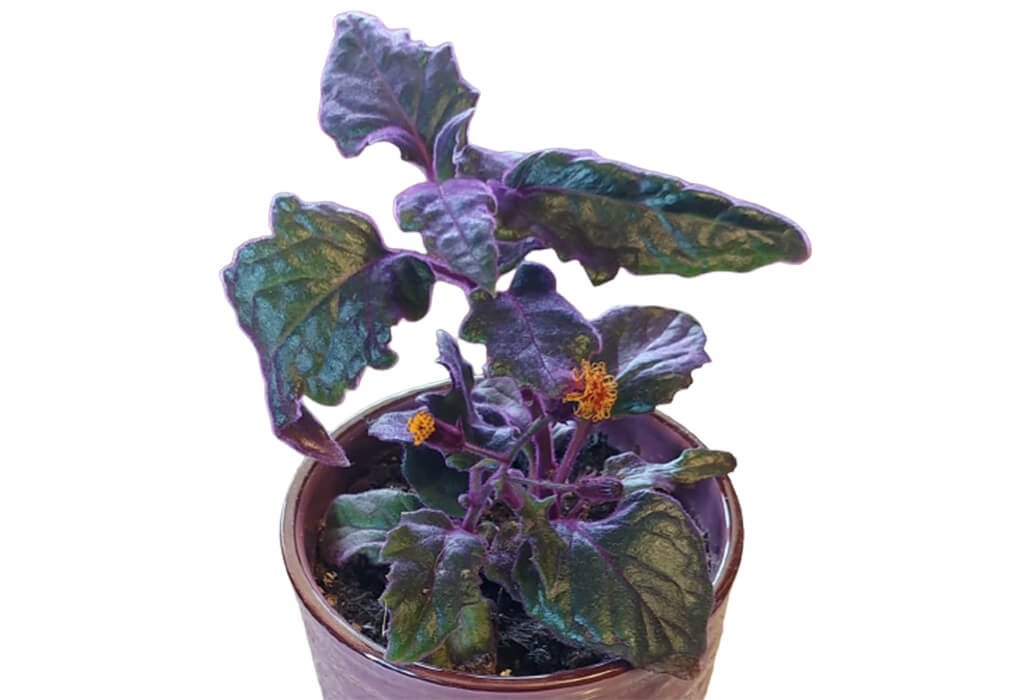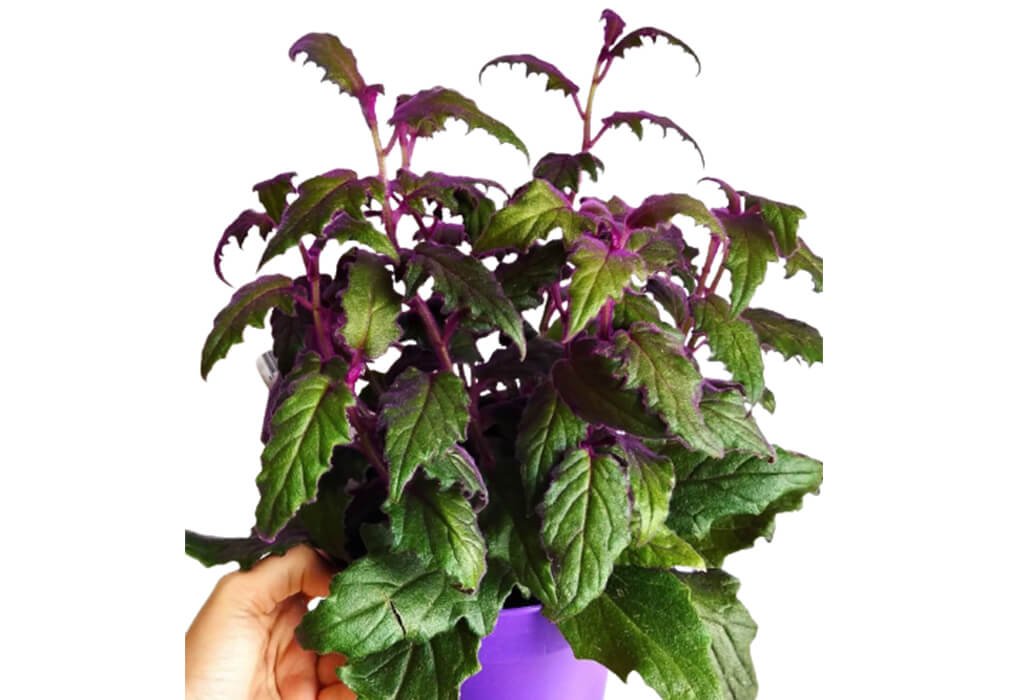If you’re trying to find the way to form a unique point in your home, then the purple passion plant is ideal for you. This can be a genus of over five
hundred species. Most species are found throughout Neotropical regions of dry land. Some are cultivated as ornamentals. Others are adults for his or her edible fruits.
The plants will be nonwoody or woody. The straightforward leaves are entire or lobate, and one plant could turn out a diversity of leaf shapes. The flower blossom varies in kind from a shallow saucer form to a long cylindrical or trumpet-shaped tube, manufacturing at its higher border 5 sepals, 5 petals, and plenty of filiform.
This is a quick growing perennial vascular plant with rising or trailing stems. The velvet leaves of this bright tropical plant are as exciting as they’re fascinating. The royal velvet plant appearance as if it’s lined in velvet because of the purple hair on the leaves and stems.
What is a purple passion plant?
The velvet plant may be a species of seed plant within the flower family Asteraceae. It’s native to Southeast Asia. This can be unbelievably uncommon plant life that options green leaves lined with tiny, purple hairs. Purple passion may be a distinctive plant life with beautiful fuzzy, purple leaves.
Purple Passion Plant Names
There are different names of purple passion plants. People also call it velvet plant, merely Gynura, maypop, true passionflower vine, wild apricot, and wild passion vascular plant.
The scientific name of the purple passion plant is “Gynura aurantiaca”. Lean more about Gynura aurantiaca on Wikipedia.
Leaves and Flowers
Leaves:
Purple passion plant has velvety leaves, thick, deep purple hairs on green-colored leaves. Smooth leaves with slightly raised hairs on light-green purple stems. This can be a cascading habit, creating it excellent for an indoor hanging basket.
Flowers:
Purple passion houseplants might turn out orange flowers. Their odor is unpleasant. Several gardeners cut the buds to avoid the dangerous blooms. Flowers are a symptom the plant has reached maturity. Make sure to begin cuttings if you haven’t already got them growing.
How to grow purple passion plant

Below are the steps of growing the purple passion plant.
Best season to plant
If you want a purple passion plant to grow in your garden, then spring season is the best time to start with it.
Where to plant?
Place the purple passion plant in bright to moderately light-weight; however, do not enable direct daylight to achieve the leaves. A brighter light-weight intensifies the purple color of the purple passion plant. The Purple passion houseplants like an excellent location.
Which type of soil does the purple passion plant required?
Plant the purple passion plant in a very houseplant soil that gives innovative drainage. Keep soil dumps, however, not wet. It tolerates dry soil comparatively well.
How often should you water to this plant?
Give water regularly to Purple passion plants. This like soil that dries slightly in between waterings. Watering the ground, and not the foliage, is suggested to avoid water spots on the foliage.
How much sun light does this plant need?
The ideal growing temperature for the purple passion plant is between seventy five and eighty five degrees Fahrenheit. Once the temperatures dip below sixty degrees growth slows; however, once the temperature remains higher than eighty Five, change will increase, and plants tend to become leggy.
How long does this plant grow?
This plant grows three feet tall and a minimum of as wide.
How long do Purple Passion plants live?
Most purple passion houseplants stay engaging for 2 to a few years.
Purple passion plant propagation

Below are the steps on how to properly propagate purple passion plants at your home and in water.
At Home
- For growing this plant 1st take pot with a hole within the center several inches deep.
- Prepare the little pot with seed-starting combine or growth mix.
- Using a clean, sharp blade, cut a little healthy stem with many leaves around 3 inches long. Take away all the leaves from the stem. Apply maturation secretion to the cut finish of the stem if using.
- Plant the cutting within the hole you poked within the soil and gently pressed the ground around the stem, so it’s stable.
- Give them the correct quantity of water and sun light-weight.
- You can conjointly discontinue the highest or bottom portion of a transparent plastic bottle that may match over the plant and at intervals the planter’s circumference and use that to carry in wet.
In Water
- Purple passion plant propagation is often tired water or soil; however, the plant has a rugged switch to the opposite growing medium once it begins.
- Trim a 4-6 in. piece just under a root node.
- Ideally, the cutting can have 4+ leaves and a minimum of 2 growth nodes.
- Take a container and fill it with water. And place the cutting in it.
- Place the cuttings close to a window; however, not in direct daylight.
- Change the water each one to two weeks.
Caring: Purple Passion Plant Care

Care matters when it comes to the growing plant. It plays an essential role in the growth of the plant. There are many factors to consider like water, location, sunlight, pruning, fertilizer etc…
Here are few factors that matter most in purple passion plant growing.
Watering
It’s essential to create sure you don’t overwater this plant, as having wet feet can doubtless destroy the plant. Whereas the plant shouldn’t be allowed to sit down in the water or soggy soil, it’ll additionally react badly to drought.
If the plant isn’t obtaining enough water, then you’ll notice the leaves setting out to droop and become quite unhappy trying. You’ll develop a balanced watering technique wherever the plant receives simply the correct quantity of water.
You must water the plant to be mostly smitten by the dimensions of the plant and the way a lot of sun and heat it’s obtaining. Aim to stay the soil wet, however not wet throughout spring and summer.
Location
If this plant lives during a shaded space and doesn’t receive enough lightweight, the hairs on the leaves can be uninteresting. This plant enjoys bright, indirect lightweight. It’ll merrily sit during a bright window, although direct lightweight can cause the leaves to burn, therefore use sheer curtains or window blinds to filter the sunshine.
A light-deprived Purple Velvet plant will become leggy because it stretches to search out a lightweight supply. It’ll thrive in temperatures between 60 and 75° F, though it doesn’t tolerate too much heat, therefore watch out if temperatures go a lot of on top of this.
If you reside during a hot climate, then try and keep the temperature within your home comparatively cool. Certify temperatures don’t drop too way below 60° F.
Sunlight:
The Velvet plant enjoys moderate to high hardness; therefore, it should be best suited to living in a room or restroom. If you have got significantly low hardness, you’ll raise the humidness with an electric humidifier.
Similarly, high humidity being helpful for the plant’s growth. The Purple Velvet plant enjoys moderate to high humidness; therefore, it should be best suited to living in an exceedingly room or restroom.
Pruning:
The best time to prune a passion vascular plant is in late winter or early spring. Cutting the vascular plant back by a few third can encourage vigorous growth and additional fruit. Maintain the dimensions you need for your purple passion plant by pruning the vines once they become too long.
Cut these vines back so that they are all three feet or shorter length. Offer a generous watering of the purple passion plant straight off when you finish pruning it, saturating the soil equally.
Fertilizer:
This is a hungry plant that likes its chemical. Use a regular plant chemical mixed with 1/2 the suggested strength. You’ll be able to feed this to your Purple Velvet plant all to 2 weeks throughout the spring and summer, and scale back this right down to once each month or 2 throughout fall and winter.
Winter care:
Give less water to the current plant throughout winter. Keeping the plant barely dampish. Provide chemical monthly throughout winter.
Humidity:
However, purple Velvet plants, like a naturally wet atmosphere, don’t prefer to get water on the leaves themselves. Normally, Mist the leaves to extend wetness; however, this could be a retardant for this plant. An area humidifier or inserting the plant in a saucer of pebbles with water below the stone layer would facilitate.
Care Against Pests & diseases
Root Rot:
Root rot typically goes undetected till the condition is severe and irreparable because of the issues happening below the soil’s surface. Plant disease can flip the rock bottom of the roots and, therefore, the root crown slippy and dark in color. This condition is only the result of overwatering.
For protection keeps the soil wet, however never moist. They push aside the maximum amount of the ground as doable and cleansing the roots off by inserting them the total amount of running water. Take away the rotten roots and specialize in re-growing the plant from healthier sources.
Spider mites:
Spider mites are thus tiny that it’s hard to envision them with the Oculus, and additionally, as a result, they hide on the undersides of the leaves. The spots can flip brown and will even lead to whole leaves turning brown. If your Purple Velvet plant contains a mite drawback, you will notice some webbing on your plant.
It’ll stunt the plant’s growth and eventually kill it. For the cover, you can gently shake the plant, and you’ll be able to see the spider mites give way. The high of the water ought to be enough to scrub this plant. Spray the plant with neem oil or another insecticidal oil.
Lepidopterous defoliators:
Lepidopterous defoliators make dark spots on the leaves. Someday it’ll injury the whole leaves. It should be controlled with insecticidal sprays.
Aphids:
Aphids cause injury by uptake sap from new growth on plants. They incline to cluster at the expansive finish of plants and connect themselves to the soft, inexperienced stems. Aphids unfold between plants by flying or crawl.
For the cover, use a robust stream of water to blast aphids from your plants. Combine the insecticidal soap during a weak concentration with water beginning with one teaspoon per gallon and increasing as necessary. Apply neem tree oil.
Scale:
Scale insects vary significantly in color, shape, and size. Scale insects are adept at protecting themselves at most stages of their life cycle. Fast removal will stop the dimensions from migrating to close plants. Apply neem tree oil.
Uses of purple passion plant
From a medicinal standpoint, the purple passion plant is beneficial and offers many herbal benefits such as…
- Passionflower is employed for anxiety, together with anxiety before surgery.
- Some individuals take passionflower for a sleep disorder, stress.
- It is conjointly used as attention deficit-hyperactivity disorder, pain, and lots of different conditions.
- Passionflower is promoted as a dietary supplement for anxiety, attention-deficit upset disorder, yet pain, heart rhythm issues, menopausal symptoms.
- It is applied to the skin for burns and to treat hemorrhoids.
Velvet Plant: Most Interesting Facts
- To eight inches long and four inches wide, deeply toothed leaves are heavily cloaked with velvety purple hairs.
- Leaves emerge bright purple, then mature to deep green.
- Purple passion plant grows three feet tall.
- The velvet tree has left are dark green on the side and purple on the lowest facet.
- Purple Passion has smaller leaves and is trailing, wonderful to be used in hanging baskets.
- Due to this plant, altered consciousness, loss of coordination, Confusion, Dizziness, are occur within the physical body.
Questions & Answers
1. Is a purple passion plant poisonous?
Answer: No, this is non-toxic for humans and pets.
2. Is Purple Passion a perennial?
Answer: Purple Passion plants are a classic garden perennial.
3. Do passion flowers smell?
Answer: The flowers have an unpleasant smell.
4. When ought to I repot my purple passion plant?
Answer: The Purple Velvet plant is often solely unbroken within 2 to a few years; therefore, you probably will not ever have the necessity to pot it. Pancreas toxicity occurs in form.
5. Why is my purple passion plant dying?
Answer: Too much or too little water can be harmful and cause wilting.
Have some questions or suggestions? Use our comments section on this blog! You can feel free to leave a comment or two down below, and we’ll get back to you as soon as possible!
We love reading your messages……
You May Also Like….

